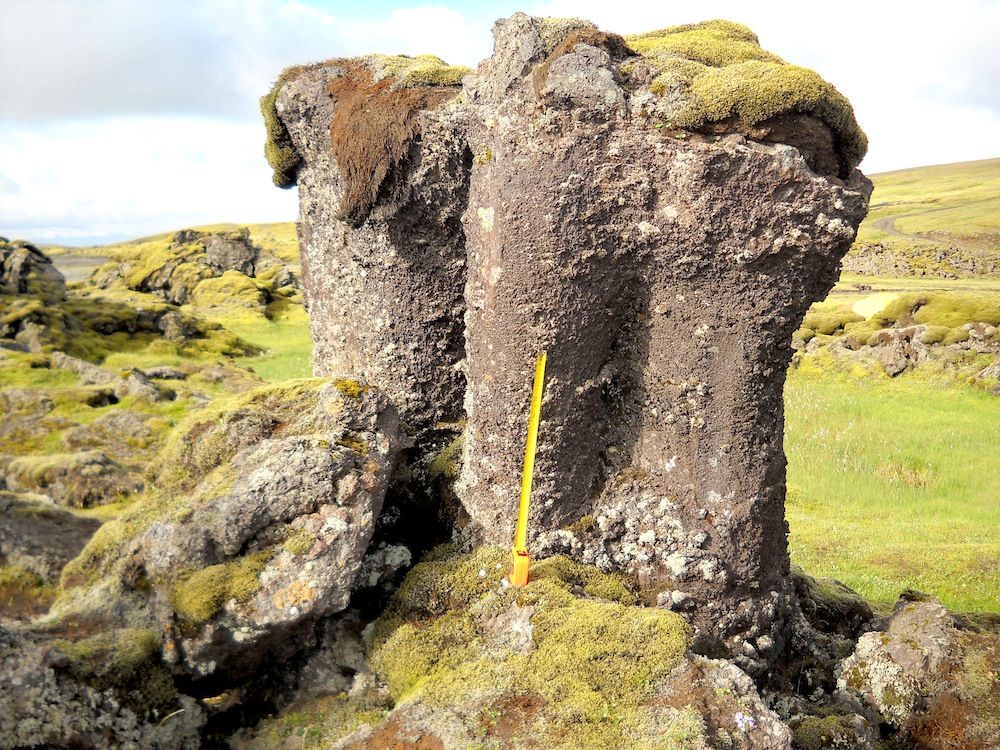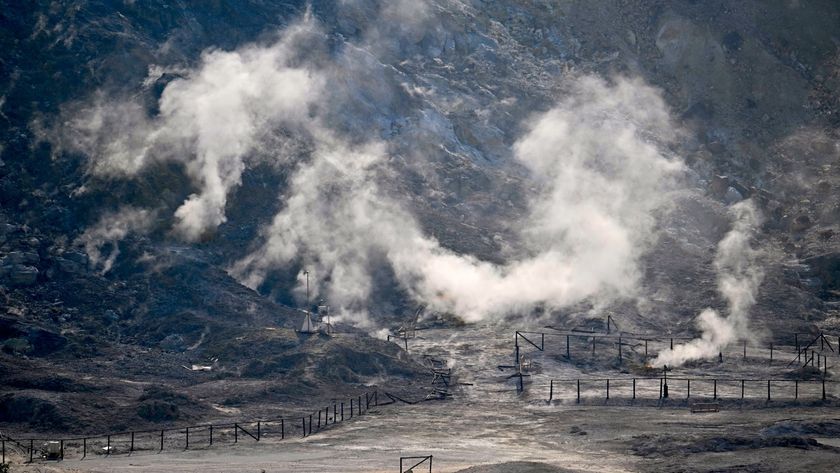
The mystery of a series of strange, knobby pillars of rock that formed in Iceland has been solved.
A creeping lava flow and a stream of water mixed to create hollow, rough pillars that dot the Skaelinger Valley in Iceland. The surprise is that these towers could form at all on land. Until now, researchers thought that whenever water and lava met on land, either explosive steam or pillow-shaped lava formed.
"These had never been observed or described before as features seen on land. They've been described at mid-ocean ridges 2 miles [3 km] under water," said study co-author Tracy Gregg, a geologist at the University at Buffalo in New York.
Troll wars?
Gregg was hiking in Iceland in 1998 when she came upon the strange pillars, which almost look like trees without branches. Some of the tallest are 8 feet (2.4 meters) high, and up to 3.3 feet (1 m) wide.
Local lore had it that trolls had fought a war in the valley, tossing these rocks in the process. [See Images of the Bizarre Lava Pillars]
Gregg was not convinced by the troll war theory. The rough spires looked eerily like features she had been studying deep in the ocean.
Sign up for the Live Science daily newsletter now
Get the world’s most fascinating discoveries delivered straight to your inbox.
"I was so excited. As soon as I saw these things I knew what they were," Gregg told LiveScience.
At mid-ocean ridges, or points in the deep ocean where the continental plates are peeling apart, lava seeps out of the ocean floor. Hot water rises up through this pillow lava and cools the nearby lava into rock, and as lava levels rise, spires grow, and remain even after lava flows have ebbed. [50 Amazing Volcano Facts]
But no one had ever documented such pillars on land.
Unfortunately, Gregg didn't get a chance to study the pillars again until 2010, when her graduate student Kenneth Christie received a grant to study the structures in Iceland.
Pillar formation
Gregg and Christie concluded that Skaelinger's odd formations formed just like underwater lava pillars, during the famed Laki Eruption of 1783, when a volcanic fissure in southern Iceland oozed lava for eight months. That eruption was so big that it killed at least 50 percent of the island's livestock and a quarter of its population. Benjamin Franklin noted Europe's hazy skies from the volcano's ash in his journal at the time, and made some of the first speculations to link volcanoes and climate, Gregg said.
As slow-moving lava inched its way across the Skaelinger Valley, the lava created a temporary dam on the river that flows through the valley, probably forming a small pond, Gregg said. The meeting of slow-moving lava and water formed spires similar to those found deep in the ocean.
Once lava levels in the valley fell, the hardened, hollow pillars remained.
The findings may force geologists to rethink how lava and water interact on land. Normally, when water and lava meet, water either drowns the lava, forming pillowlike structures, or the lava heats the water in a flash till it turns to steam that explodes, Gregg said.
Iceland and Mars
It's also possible that lava pillars may occur elsewhere on Earth. These spires, born in past eruptions, can also provide insight into the historical climate, Gregg said.
"If we find them somewhere else on Earth, it tells us that when that lava was in place, that the area was wet," she said.
She's also planning to look at high-resolution images from Mars for signs of lava pillars, which would be a telltale sign that the Red Planet once had water.
The lava pillars are described in a forthcoming issue of the Journal of Volcanology and Geothermal Research.
Follow Tia Ghose on Twitter and Google+. Follow OurAmazingPlanet @OAPlanet, Facebook and Google+. Original article on LiveScience's OurAmazingPlanet.

Tia is the managing editor and was previously a senior writer for Live Science. Her work has appeared in Scientific American, Wired.com and other outlets. She holds a master's degree in bioengineering from the University of Washington, a graduate certificate in science writing from UC Santa Cruz and a bachelor's degree in mechanical engineering from the University of Texas at Austin. Tia was part of a team at the Milwaukee Journal Sentinel that published the Empty Cradles series on preterm births, which won multiple awards, including the 2012 Casey Medal for Meritorious Journalism.











